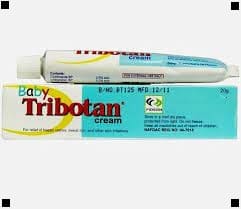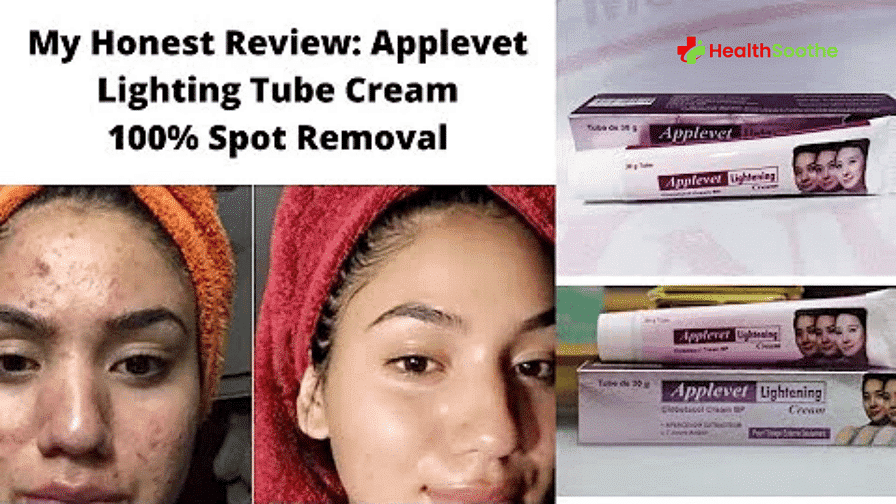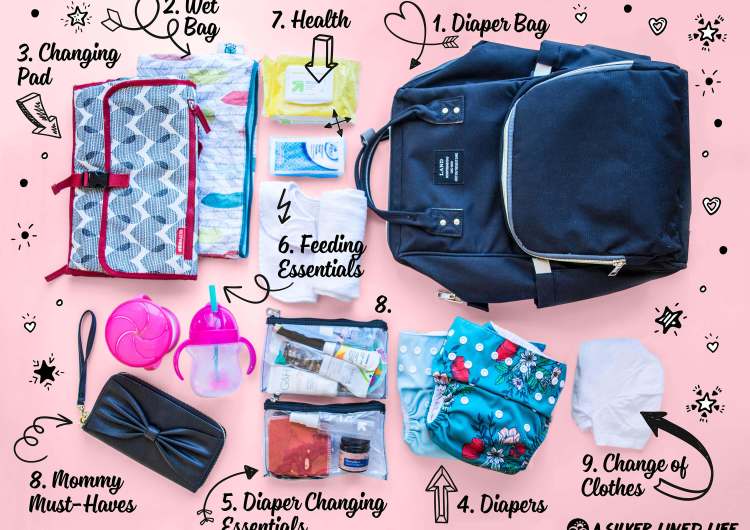Fungal and Bacterial skin infections are common among babies and effective topical treatment for it is Baby Tribotan. It is considered safe for babies as it is mild and easier on the skin of babies, as opposed to the Tribotan topical cream available to adults.
Quick Facts About Baby Tribotan Cream
| A | B |
|---|---|
| Product Name | Baby Tribotan Cream |
| Brand Name | Fidson Healthcare Plc |
| Product Type | Dermatological preparation |
| Active Ingredients | Clotrimazole and ichthammol |
| Purpose | Treats fungal skin infections, such as ringworm, athlete's foot, fungal nappy rash, and fungal sweat rash. Also relieves irritation of the vulva (external thrush) or the end of the penis, which may be associated with thrush |
| Dosage | Apply a thin layer of cream to the affected area two to three times a day for up to two weeks |
| Side Effects | Skin irritation, such as burning, itching, inflammation or redness |
| Warnings | Do not use on open wounds or deep cuts. Avoid contact with eyes, mouth, and nose |
| Pregnancy and Breastfeeding | If you are pregnant or breastfeeding, talk to your doctor before using this product |
| Cost | The cost for baby tribotan cream can vary based on where you buy it from. It typically ranges from; • 1.90 USD - 6.33 USD • 1500.00 NGN - 5000.00 NGN • 1.74 EUR - 5.82 EUR • 1.50 GBP - 4.99 GBP • 13.43 CNY - 44.77 CNY |
Due to extended time of being in wet diapers, heat, and the environment they find themselves in, babies are susceptible to developing skin rashes, sweat itch, acne, ringworm, eczema – commonly called Eela or Nla among the Yoruba and Igbo, respectively – and impetigo, among others. Baby tribotan helps to address these skin issues by relieving the itching, scaling, and burning of the skin. And helping the mother rest from the incessant crying, as a result of the discomfort, of the baby.
In this article, we will consider the ingredients in baby tribotan that make it effective and safe for babies. We will also delve into the common uses of baby tribotan, the recommended dosage, the possible side effects, and the average price of the cream in pharmacies and medicine stores, across Nigeria.
Baby Tribotan Ingredients
Baby Tribotan cream is used to inhibit the growth of bacteria and fungi on the surface of a young human. It contains active ingredients – Clotrimazole and Ichthammol – at a concentration that does not irritate the young and soft skin of babies.
Clotrimazole is a common medication used in treating fungal infections, especially of the vagina. It is available in many forms – as tablets, solutions, or in pastes – and is a potent medication against oral thrush, candidiasis, and yeast infections. It reduces the itching and burning symptoms that come with fungal infections and reducing the population of fungal spores as it does so.
Ichthammol is an effective medication against eczema, psoriasis, ringworm, and a host of other skin conditions. It is a salt, sometimes called ammonium bituminosulfonate. It is usually yellow, probably due to the abundant presence of sulfur, and has a characteristic smell. It helps to inhibit the growth of fungi and bacteria that cause skin conditions such as dermatitis and dry skin.
These ingredients, when combined, help to stop the spread of skin infections in babies, and at the same time, treats the symptoms, such as skin itching, burning, redness, and in some cases, pustules.
Common Uses of Baby Tribotan
Chances are you already know why your baby may need this version of tribotan. However, you may not know that there are many skin conditions that baby tribotan can be used for, also, there are some unintended uses this medical cream has been subjected to, and its safety for these purposes is questionable.
The common and expected uses of baby tribotan include for skin conditions such as:
Impetigo
Impetigo is a bacterial infection of the skin, usually caused by one of two types of bacteria – Streptococcus and Staphylococcus aureus. It is characterized by an itchy sore that develops into crusty scabs that may be yellow or honey-colored, around the sore.
In local parlance, it is commonly called Alefo in Yoruba.
Psoriasis
This is a more serious skin condition that can be lifelong. However, its symptoms can be treated with baby tribotan. The skin is red and scaly with this condition, and it causes the affected part to become itchy. It can affect any part of the skin and usually comes and goes.
The symptoms, such as itching, small scaling spots, burning, among others, can be effectively treated using baby tribotan. However, it will reoccur.
Acne or Pimples
Acne and pimples occur as a result of clogging of skin pores. It is most common in babies that are raised in humid environments. The skin is unable to breathe, causing the accumulation of oil that creates a thriving environment for bacteria.
Baby tribotan renders the bacteria lifeless when applied to the affected skin area, provided the skin is regularly cleaned.
Oral Thrush
Oral thrush is a fungal infection of the mouth. It is also called oral candidiasis and it is not considered a serious condition. It can be effectively treated by the active ingredients in baby tribotan, but the cream is not suitable. An oral solution of the ingredients is used for this treatment.
Other skin infections baby tribotan is used to treat include:
- Eczema
- Ringworm
- Diaper or Nappy Rash
- Sweat Itch
- Athlete’s foot
- Chaffing
One common unintended use of baby tribotan is to achieve a lighter skin complexion, even among adults.
Recommended Dosage of Baby Tribotan
The ingredients of baby tribotan cream are not considered detrimental to the skin, even when used in high concentrations. However, different packages of tribotan may have different concentrations of these active ingredients.
Therefore, a generous amount of the cream should be massaged into affected skin parts at least twice daily.
Possible Side Effects of Baby tribotan
Despite the relative safety of the cream, there may be an appearance of reactions and side effects to using baby tribotan. It may be as a result of allergies to Imidazole or interaction with other chemicals, probably present in your baby’s cream. They include:
- Skin inflammation
- Redness
- Irritation
- Burning
- Skin rash
Average of Baby Tribotan in Nigeria
Baby Tribotan cream is available in a tube of about 20g and it is available in any medical store or pharmacy in Nigeria. The average price of the cream regardless of where you are is 800 Naira. However, in some areas, you can get baby tribotan for as low as 600 Naira, and as high as 1000 Naira.
Frequently Asked Questions on Baby Tribotan
Is Baby Tribotan Suitable for Pregnant Women?
Considering that baby tribotan is a cream, one will think it poses no danger to pregnant women. However, it is advisable that pregnant women, especially those in their first trimester, should avoid the use of tribotan altogether.
This is because of the possible reaction to Imidazole, which may cause unwanted medical problems.
Does Baby Lightens Baby Skin?
Baby Tribotan is meant to help treat skin infections. However, as a result of ignorance, some mothers think all skin infection creams will help their babies achieve lighter skin tone. Baby tribotan does not make the skin lighter.
Unlike the antifungal cream, Funbact A, baby tribotan does not contain ingredients that make the skin fairer.
How Long Does it Take for baby Tribotan to Work?
Different types of skin take different lengths of time to exhibit the effect of baby tribotan. However, on average, the effect of baby tribotan will be apparent on your baby’s skin from three days of consistent use. Do not be surprised if you see changes before then.
Conclusion
Baby tribotan is a cream used to treat skin infections caused by bacteria and fungi. It contains the same ingredients as the normal tribotan cream, only at a lesser concentration, and is specially made to prevent irritation on babies’ soft and sensitive skins.



